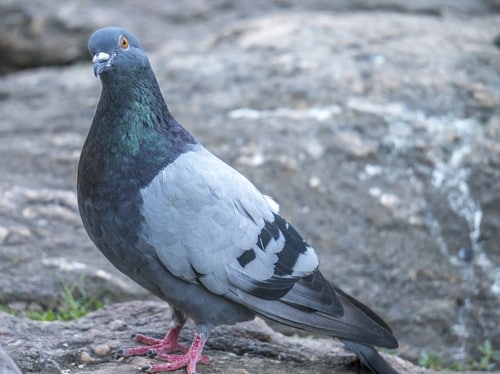DOVE |
||
 |
||
Probably, each of you has seen pigeons, because many of them live on the streets of our cities, and there are places, such as St. Mark's Square in Venice, where there are simply many pigeons.
However, there are actually as many as 35 different species of pigeons, and they are all different from each other. So, for example, the crowned pigeon from Papua New Guinea is the largest pigeon in the world, its weight can be up to 3 kg. And the diamond-banded turtledove from Australia, on the contrary, is the smallest representative of the pigeon kingdom, its weight is about 30 g on average. Depending on the species, the color and habits of a particular pigeon may change. But in general, all pigeons have a strong build, a short neck and a long head. The length of a pigeon, depending on the species, can vary from 15 to 75 cm. The wing of a pigeon has 11 primary flight feathers and 10-15 secondary ones, the wings of birds are wide, long and usually rounded at the ends.
Pigeons also have a tail, it is long, at the end it can be either pointed or rounded and wide. Crown-bearing and pheasant species of pigeons each have 12-18 feathers on the tail. The beak of pigeons is usually short, (but there are species in which it is longer), straight, thin, and with some expansion at the base. Near the base of the beak is a patch of bare, soft skin called the wax. Sexual dimorphism, the difference between male and female pigeons is poorly developed, but nevertheless, male pigeons are usually larger than females. Also, in some species of variegated tropical pigeons, males have a brighter color than females. The plumage of pigeons is thick, dense, usually gray and brown in color. In the tropics live variegated pigeons with bright multi-colored plumage. The feet of these birds are short, four-toed, three toes at the front and one at the back. At the same time, they are very comfortable for walking. Interesting fact: pigeons do not have a gall bladder. From this fact, some medieval scientists made the false conclusion that pigeons do not have bile at all. Such a conclusion fit perfectly into the prevailing at that time teaching about the four types of fluids in the human and animal body (and all diseases were explained by a violation of the proportion of these fluids). And the imaginary absence of bile in pigeons gave these birds a certain "divine character". In fact, pigeons do have bile, it's just that it is released immediately into the digestive tract. |
||